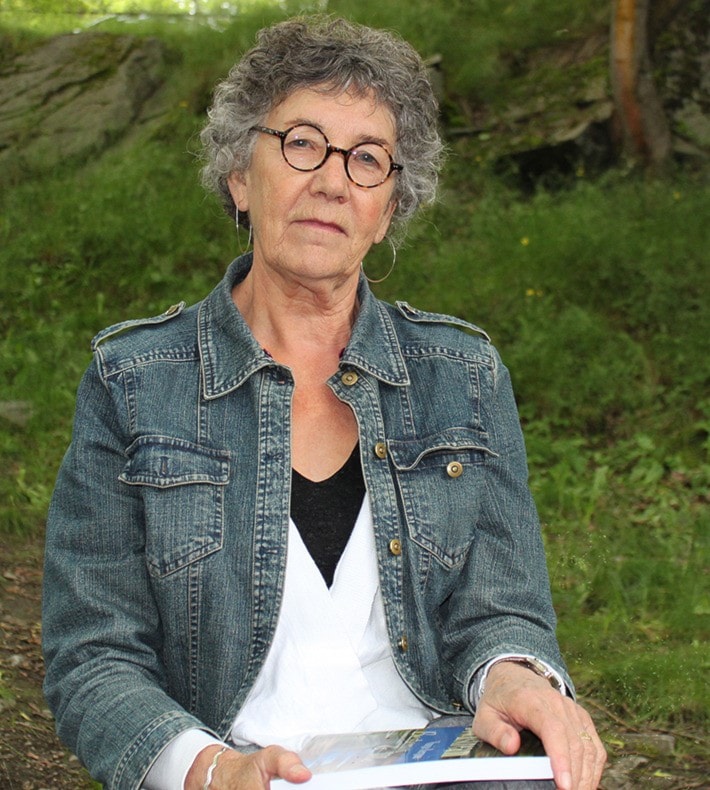Vangie Bergum’s grandmother Inger Marie died on a remote Saskatchewan homestead in 1929, but the Ymir author still converses with her on a regular basis.
“It’s not a weird relationship I have with her. I know it’s coming out of my own writing, my own thoughts,” said Bergum in a recent interview with the Star.
“When I talk to her, I talk to her as ‘bestemor’, which is Norwegian for grandmother, She was 57 when she died. Younger than I am now. But I’ll ask her a question and she’ll answer me. She’s always supportive of me, and my writing. She’s glad that I talk to her, and that I’m interested in her life.”
Bergum is more than interested. Her lifelong investigation into her grandmother’s death at the hands of her grandfather qualifies more as an obsession. According to her, she had no choice but to write her recently released memoir Downstream: Bestemor & Me, which explores the murder-suicide that claimed her grandmother’s life and the long-term effects it had on her family.
“I have a relationship with my grandmother now,” she said. “It’s based on what I know about her. Letters she wrote. I asked her if I should be doing this, and she was guiding me in some ways.”
Bergum began writing in 1985, but didn’t see the book published until this year.
“It’s very hard to tell this story, emotionally. It was important for me to share it, but it’s still a tough story,” she said. “The reason I felt like I needed to do it was I believe we carry stories generationally, and if I didn’t write the story it would be unfinished business.”
She said if she hadn’t completed it, perhaps one of her children would’ve had to. This is her way of finally addressing a source of shame in her life.
“I feel, as I’ve worked through this, the shame I may have felt and experienced without recognizing it, is better being out in the world. It’s better to share it,” she said. “My goal is always to make the world a more beautiful place to live and to be honest about the sorrows and tragedies we face.”
Bergum said, though the process of investigating her grandmother’s life was a cathartic experience for her, she also has a larger issue in mind.
“My interest academically and as a woman was to explore this notion of missing women in our lives. In the book I tell the story of the 14 women massacred in Montreal as I’m taking my daughter to school. There are so many examples,” she said.
“I miss my grandmother. I miss my aunts. These women are missing in our lives.”
Bergum’s ancestors immigrated first to the U.S., and then to Canada, from Norway at the beginning of the 20th century. Inger Marie had 10 children, of whom Bergum’s mother was the eldest. She was not home on the night of the tragedy.
“My mother was incredibly happy. Everyone remembered her as a happy woman. But I was aware of her sadness too,” she said. The topic of her grandparents was firmly off-limits.
“She couldn’t talk about it. She had to survive. She had to live and take care of us and move on with her life,” Bergum said. “It was a story we all knew about, but didn’t really know about, because nobody really told me until I was 12. It stayed in the background of my mind for a long time, and I think for many of my cousins and sibling that’s true. We didn’t ask questions because we knew we shouldn’t.”
Bergum began asking those questions in earnest after a writing workshop she attended years later as a grown woman. Her instructor asked them to write about their grandmothers.
“In the conversation after she said ‘well, how did she die’? And that was the beginning.”
Understanding her grandmother’s social context was key to coming to terms with her tragic demise, said Bergum. She delved both into her life, and the life of her spouse.
“My grandfather was an incredibly skilled carpenter. He built a number of houses and churches. But he wasn’t a farmer, I don’t think,” said Bergum. “They moved from homestead to homestead, and he was hired out. He was a restless man.”
Bergum’s grandmother was institutionalized twice in the early 1900s, and there are other indications of family trouble, but what exactly caused the murder-suicide can never be known for sure.
“I think they ended up living in a tiny little house in northern Saskatchewan, and the tragedy happened in October, right before winter,” said Bergum. “The inquest said my grandfather had a moment of insanity, and I’m not sure. That’s what I have to believe.”
Downstream: Bestemor & Me is now for sale wherever books are sold.
